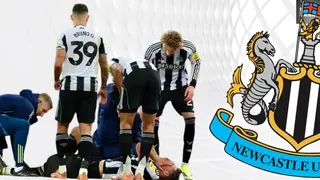Newcastle United at the forefront of medial science reducing severe injuries by 33% after arrival of James Bunce

Newcastle United were ravaged by injuries last season and they weren't always innocuous bumps but more often they were potentially avoidable long-term injuries.
Something had to change this season and as one of his first actions as sporting director, Paul Mitchell brought in James Bunce to head up the medical department at the club in a bid to reduce the number of injuries and you can't argue with the results.
iNews has today reported that the club are claiming a 33% reduction in injuries already this season.
A proactive approach and AI-driven technology have been credited with the club's progress.
Newcastle United are driving change in sports science
Players undergo weekly blood tests that detect early signs of stress and inflammation, often before symptoms manifest. This data is integrated with AI-powered motion analysis, revealing deviations in player movements that indicate potential injury risks. The result is a hyper-personalised approach to training and recovery, tailored to each player’s unique needs and playing position.
This season, Newcastle has significantly improved player availability, down from 41 serious injuries last year to just six so far, according to injury analyst Ben Dinnery. Key to this success is collaboration with Orreco, a leading sports science firm, and a team of 19 PhDs specialising in biomechanics and recovery analytics. Their groundbreaking research links player movement patterns with injury risks, offering insights used by Newcastle’s performance and medical staff to optimise decisions.
Performance director James Bunce and a dedicated team of scientists and coaches have also driven progress. Newcastle has invested heavily in state-of-the-art technology, such as AI-powered athlete tracking systems, to monitor players in real-time. This approach aims to eventually allow for real-time adjustments during games, likened to Formula One pit-crew strategies.
Newcastle's intensity has dropped significantly this season - coincidence?
We wonder how long it will be before we see Callum Wilson up on bricks at the side of the pitch getting his knees replaced in record time.
While all of these improvements are fantastic, there has been a feeling amongst fans that all this treading carefully has seriously impacted players' fitness after noticing a huge drop-off in the level of intensity this season.
Somewhere in the middle lies the answer where the players can push themselves to the limits for 90 minutes each week and still not have to worry about injuries.
But until the Premier League allows augmentation, that's probably a pipe dream.








































